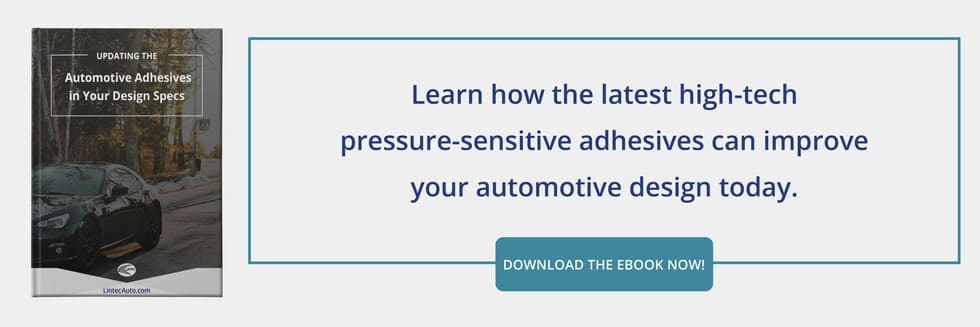Heat is only one of many adhesive challenges faced by car labels in the engine compartment, but it may be the hardest to accommodate. It’s not unusual for the engine bay to reach temperatures that could boil water (in some cases up to 220°F). Performance boosting technologies like turbochargers can turn up the heat even more. At the same time, wintry freezes might even bring the materials of a parked car down below 0°F for extended periods.
Car labels must endure both ends of this broad spectrum of temperature fluctuations while remaining reliably adhered and never losing clarity—especially for critical caution or auto data labels. This will require care in the selection of both the ribbon material and the adhesive layer for your car labels. Clear laminates can offer an extra layer of protection, but also an extra layer of concern, as you have to ensure that the transparent film laminate won’t become cloudy or dark over time due to the stresses of a hot environment.
Let’s look a little closer at the materials best for heat-resistant labels in the extreme environment of the engine bay:
Heat-Tolerant Polymers (Polyester, Vinyl)
Vinyl and polyester are two of the best materials for high-temperature labels due to their natural heat resistance.
- Polyester: Label ribbons made from polyester can be finished matte, glossy, or even protected beneath laminate overcoats for added resilience. Polyester will withstand extreme engine temperatures and cold weather conditions alike. The inherent dimensional stability is a benefit since it prevents extreme thermal expansion issues. The chemical resistance of the polymer protects it from corrosive substances that are common to the engine area. For many automakers, polyester is the gold standard for heat-resistant car labels.
- Vinyl: While somewhat less common, vinyl is a premium quality material extremely resilient in heat. Made from salt and ethylene, it’s also sturdier, more water-resistant, and more environmentally friendly than polyester. Not many materials will exceed the overall durability of vinyl, even in extreme climatic conditions.
Heat-Stabilized PVC
Raw Polyvinyl Chloride (PVC) has suboptimal heat tolerance—it will begin to distort around 140 °F, which engine components frequently exceed. However, the superior chemical resistance of PVC in the face of corrosive acids, salts, alcohols, gas, oils, and more is incredibly attractive for automotive labels.
This is why many car label makers craft “heat-stabilized” PVC by adding stabilizers to the formula that significantly enhance its maximum temperature tolerance to automotive-grade levels. Polyester will still have an advantage as a simply heat-resistant label, but PVC’s imperviousness to elements may make it more valuable in the long run.
Industrial Engine Label Acrylics
High-performance acrylic adhesives are formulated to hold tight on both plastics and metals, even in hot environments. Engine materials are changing, so the added adhesion on low-surface-energy materials is exceptionally useful. It’s possible to use these adhesives on any of the above label backing materials. Since it’s a permanent adhesive, the incredible staying power and chemical tolerance of industrial-grade acrylics will be ideal for car labels in the engine bay. Heat-resistant labels with an automotive acrylic adhesive layer can withstand a wide range of hot and cold temperatures (in some cases ranging from below -40 °F to blazing levels over 300 °F).
Choose a Reliable Supplier for Heat-Resistant Car Labels
LINTEC Automotive provides an impressive selection of materials and adhesives for use all around the vehicle. Our engine labels will remain firmly adhered in the most adverse conditions without sacrificing legibility or clarity. Contact us today to consult with our experts and find the right combination of materials for the car labels in your project.

